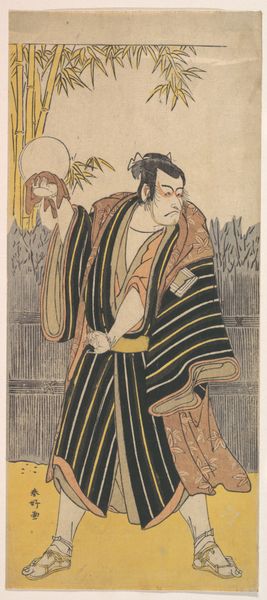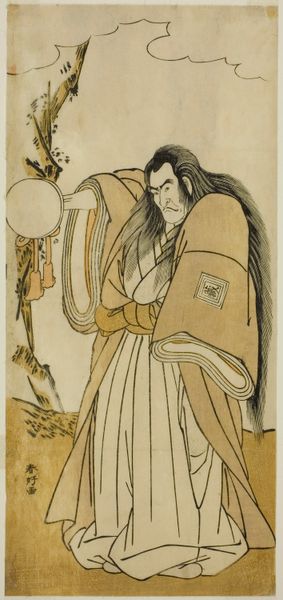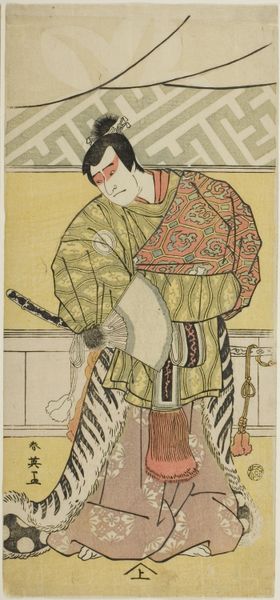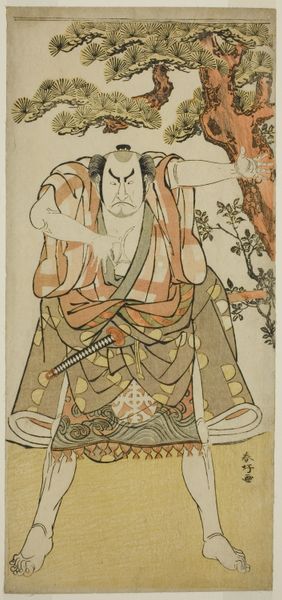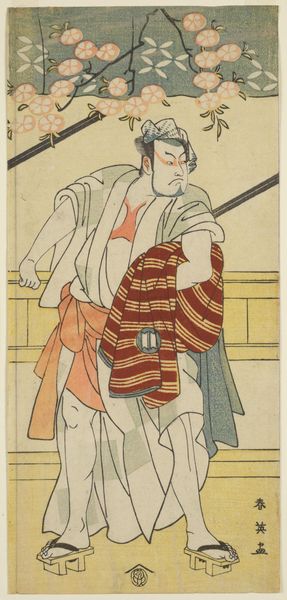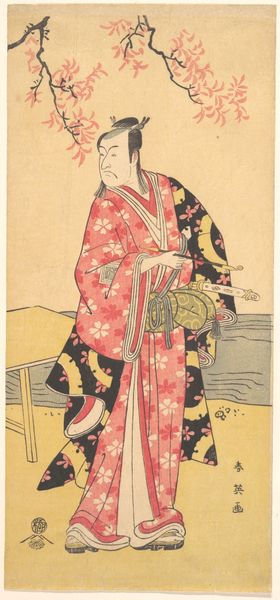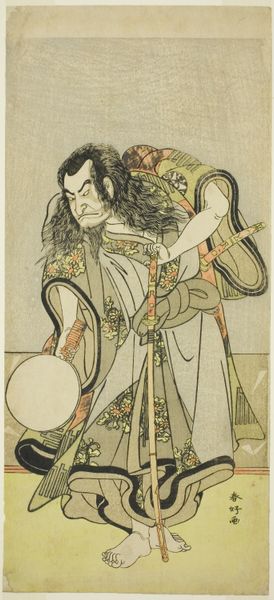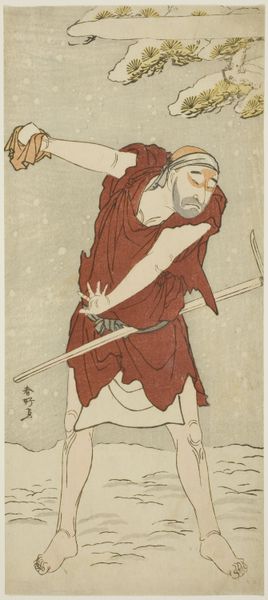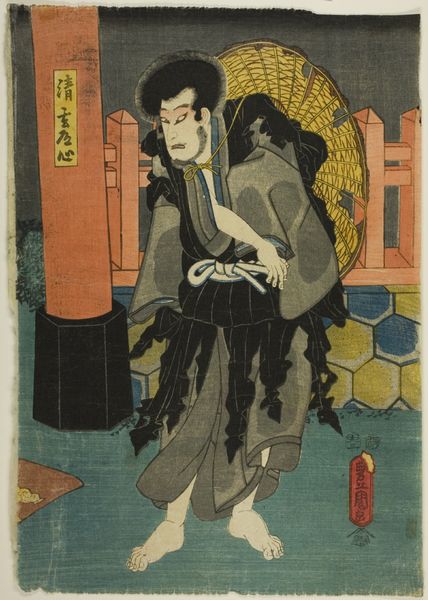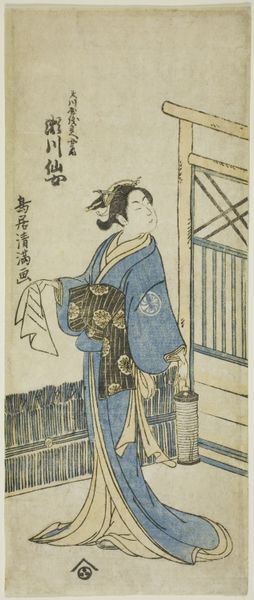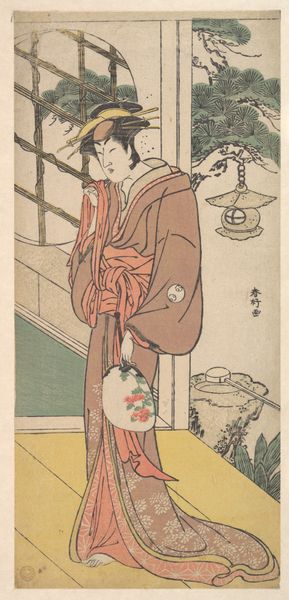
The Actor Ichikawa Komazo II as the monk Shunkan in the play "Shunkan Shima Monogatari," performed at the Kawarazaki Theater in the ninth month, 1791 c. 1791
0:00
0:00
print, woodblock-print
#
portrait
# print
#
asian-art
#
ukiyo-e
#
figuration
#
woodblock-print
Dimensions: 30.8 × 13.9 cm (12 1/8 × 5 1/2 in.)
Copyright: Public Domain
Curator: This woodblock print by Katsukawa Shun'ei, dating from around 1791, depicts the actor Ichikawa Komazo II in the role of the monk Shunkan. It's currently part of the collection here at the Art Institute of Chicago. Editor: It's a striking image. My first impression is one of profound isolation; the figure appears so burdened and world-weary. The colors are subdued, almost somber, adding to that sense of melancholy. Curator: Yes, that sense of isolation is key to understanding Shunkan's story. The play, "Shunkan Shima Monogatari," tells of his exile to a remote island after a failed rebellion. He’s holding two mirrors, suggesting perhaps self-reflection but also a fractured sense of identity in this enforced solitude. Think about the sociopolitical implications of banishment in Edo period Japan, and what that meant for the individual stripped of their community and status. Editor: The formal composition really underscores that, too. The actor's pose – that slight hunch, the downturned gaze – creates a closed, almost claustrophobic feeling despite the apparent open space of the background. And the way Shun’ei employs line, particularly in the rendering of the robes and the hair, provides a stark graphic quality. The angularity against the slight floral pattern adds an undercurrent of unease. Curator: Exactly! The details of the costume also point to his position. Despite the exile, the elaborate robes suggest a clinging to past status, yet their dishevelment indicates his present plight. Ukiyo-e prints such as these weren't merely portraits; they actively engaged with constructing and circulating notions of fame, power, and morality within society. To witness a renowned actor portraying such vulnerability would have been particularly resonant for audiences then. Editor: What’s interesting to me is the inherent tension in representing theatre – a highly performative art form – within the static, fixed medium of the woodblock print. You’re essentially capturing ephemerality and theatrical presence within a supposedly objective visual form. The flatness, a typical feature of woodblock prints, accentuates this feeling. There's a loss of dimensionality, as if the performance is being compressed or flattened under scrutiny. Curator: I agree. The very act of turning the ephemeral into the tangible reveals so much about the actor’s influence, celebrity, and their ability to communicate meaning during politically fraught times. The print offers a chance for further dialogue on the relationship between theatre, social commentary, and identity formation. Editor: Indeed, by examining its formal elements – color, line, composition – alongside its historical context, we start to understand how even an ostensibly simple image can reveal complex intersections between art, identity, and society. Curator: And ultimately, it serves as a poignant reminder of how art can immortalize and scrutinize narratives of resilience.
Comments
No comments
Be the first to comment and join the conversation on the ultimate creative platform.
